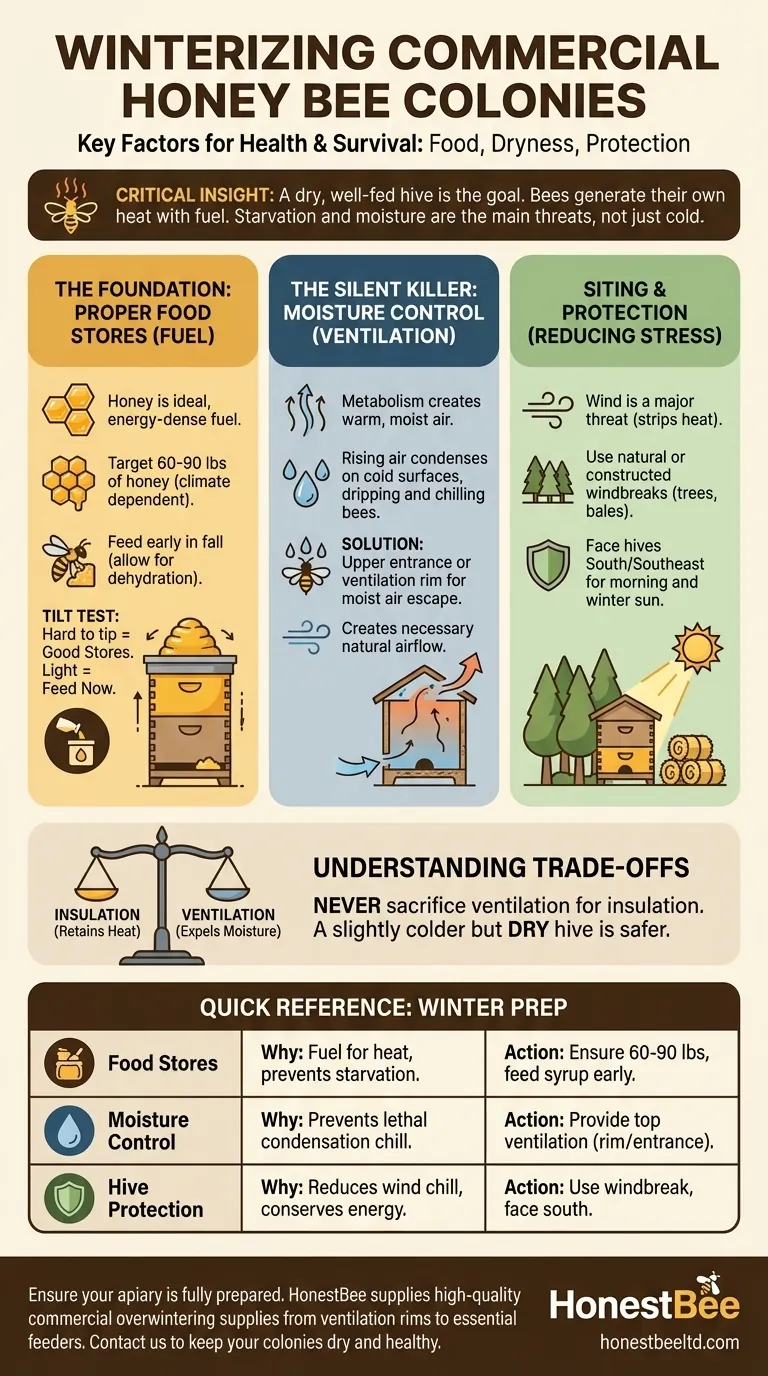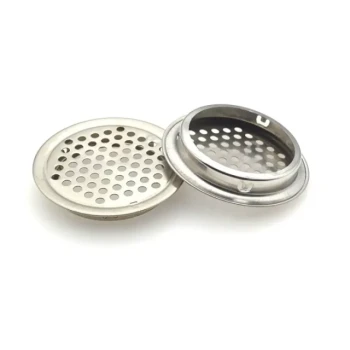To ensure your bees survive the winter, you must focus on three critical factors: guaranteeing sufficient food stores, managing internal hive moisture, and providing adequate protection from the elements. The specific needs of your hive will depend on the type of bee, your local climate, and the hive's specific location.
The greatest threats to a colony in winter are not cold itself, but starvation and moisture. A successful wintering strategy prioritizes a dry, well-fed hive over a warm one, as bees are remarkably adept at generating their own heat when they have the proper fuel and environment.

The Foundation: Proper Food Stores
A honey bee colony's ability to generate heat is directly tied to its food supply. Honey is the perfect fuel, and ensuring they have enough is your first and most important task.
Why Honey is the Ideal Winter Fuel
Honey is a supersaturated sugar solution with low water content. This makes it energy-dense and resistant to spoilage.
Bees consume honey and metabolize the sugars, flexing their flight muscles to generate heat and keep the central core of their winter cluster at a stable temperature.
When and How to Feed
If a hive is light on its own honey stores, you must supplement it with sugar syrup in the fall.
It is critical to feed early enough in the season. This allows the bees time to dehydrate the syrup, reducing its moisture content before storing it in the comb, which prevents fermentation and reduces overall hive humidity.
Estimating Food Requirements
The amount of honey needed varies based on your climate and the length of your winter. A common benchmark for cold climates is 60 to 90 pounds of honey.
You can assess a hive's weight by tilting it from the back. A hive that is difficult to tip is likely well-provisioned; one that feels light needs immediate feeding.
The Silent Killer: Moisture Control
A byproduct of the bees' metabolism is water vapor. In a cold hive, this warm, moist air can be lethal if not managed correctly.
The Danger of Condensation
When the warm, moist air produced by the cluster rises and hits the cold inner cover or top of the hive, it condenses into water.
This cold water can then drip down onto the bees, chilling them, stressing them, and potentially killing the colony. A wet bee is a dead bee in winter.
Ensuring Proper Ventilation
To prevent condensation, this moist air must have a way to escape. Providing a small upper entrance or using a ventilation rim is essential.
This allows the warm, damp air to exit while drawing in cooler, drier air from the bottom entrance, creating a natural and necessary airflow.
Siting and Protecting the Hive
Where and how you position your hive can significantly reduce the environmental stress it faces, allowing the colony to conserve energy and food.
The Importance of a Windbreak
Wind is a far greater threat than still, cold air. It strips heat from the hive surface, forcing the bees to consume more honey to maintain their cluster temperature.
Position hives behind a natural windbreak like a line of trees or a building. If one is not available, you can construct a temporary barrier using straw bales or a small fence.
Maximizing Winter Sun
Positioning your hive to face south or southeast allows it to catch the morning and winter sun. This passive solar gain helps warm the hive, encouraging the bees to take cleansing flights on milder days.
Understanding the Trade-offs
Every winterizing decision involves balancing competing needs. Understanding these trade-offs is the mark of an experienced beekeeper.
Insulation vs. Ventilation
The primary trade-off is between retaining heat and expelling moisture. While wrapping or insulating a hive can help conserve heat, it can also trap moisture if ventilation is inadequate.
Never sacrifice ventilation for insulation. A slightly colder but dry hive is far more likely to survive than a warmer but damp one.
The Risk of Late Interventions
Feeding too late in the fall can introduce excess moisture that the bees cannot cure. Likewise, opening the hive in deep winter to check on the colony breaks the hive's propolis seals and can chill the brood nest, causing more harm than good. Trust your fall preparations.
Tailoring Your Winter Strategy
Your approach should be adapted to your colony's strength and your specific environmental conditions.
- If your primary focus is a new or small colony: Prioritize supplemental feeding, as they have had less time to build up their own stores and have a smaller cluster to generate heat.
- If your primary focus is an established, strong colony: Your main role is to confirm they have sufficient food and ensure there is proper top ventilation for moisture to escape.
- If your primary focus is beekeeping in a very wet, mild climate: Your absolute priority is ventilation and preventing mold, as high ambient humidity is a constant threat.
By focusing on keeping your bees dry and well-fed, you provide the exact support they need to survive the winter and thrive in the spring.
Summary Table:
| Key Factor | Why It's Critical | Key Action |
|---|---|---|
| Food Stores | Fuel for heat generation; prevents starvation. | Ensure 60-90 lbs of honey; feed sugar syrup in early fall. |
| Moisture Control | Prevents lethal condensation from dripping on bees. | Provide top ventilation (upper entrance/ventilation rim). |
| Hive Protection | Reduces wind chill and conserves colony energy. | Position hive with a windbreak and facing south for sun. |
Ensure your apiary is fully prepared for winter. HONESTBEE supplies commercial apiaries and beekeeping equipment distributors with the durable, high-quality supplies needed for successful overwintering. From ventilation rims to essential feeding equipment, our wholesale-focused operations ensure you get the right gear to keep your colonies dry, well-fed, and healthy. Don't leave your bees' survival to chance—contact our experts today to discuss your winter preparation needs.
Visual Guide

Related Products
- Professional Insulated Winter Hive Wrap for Beekeeping
- Inner Beehive Cover for Beekeeping Bee Hive Inner Cover
- Stainless Steel Round Beehive Air Vents for Ventilation
- Professional Galvanized Hive Strap with Secure Locking Buckle for Beekeeping
- Long Langstroth Style Horizontal Top Bar Hive for Wholesale
People Also Ask
- Should bee hives be insulated? Protect Your Colony from Moisture, Not Just Cold
- How does insulation help bee hives in severely cold weather? Conserve Energy & Ensure Colony Survival
- Why is it important to insulate beehives during winter? Boost Your Colony's Survival Rate
- Why is insulation important for hives during winter? Ensure Your Bees Survive and Thrive
- What are the steps to properly wrap a beehive for winter? Ensure Your Colony Survives the Cold



















